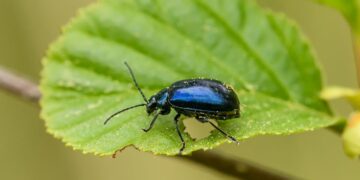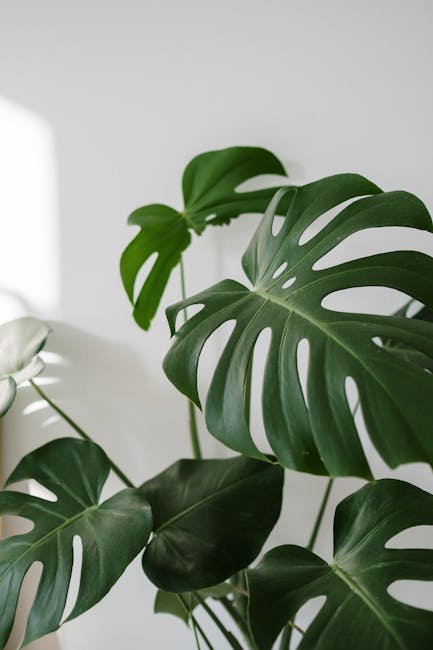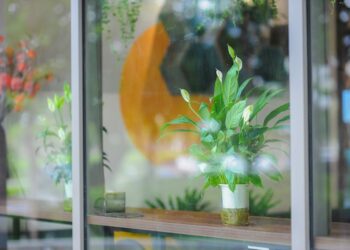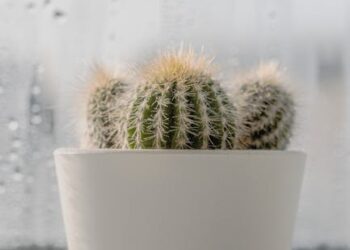Discover the Best Air-Purifying Houseplants for a Fresher Home
Imagine stepping into a living space where the air feels cleaner, fresher, and invigorating. What if you could create such an atmosphere in your home just by decorating it with beautiful plants? It’s not just a dream! Certain houseplants can significantly improve indoor air quality. Given the amount of time we spend indoors, incorporating air-purifying plants into our homes is both a practical and attractive way to enhance our living environments. In this article, we will explore some of the best houseplants that can help purify the air, contributing to a healthier and more refreshing home environment.
Understanding the Science Behind Air-Purifying Plants
The ability of plants to purify air was popularized by NASA’s Clean Air Study, which identified several plants that can filter out common volatile organic compounds (VOCs) like benzene, formaldehyde, and trichloroethylene from the air. Plants absorb pollutants through their leaves and roots, the latter sometimes hosting microbes that help break down toxins, turning them into plant food. This natural purification process can help reduce the risks associated with indoor air pollution, which often ranks among the top five environmental risks to public health.
How Plants Improve Air Quality
Plants increase oxygen levels through photosynthesis whereby they take in carbon dioxide and convert it into oxygen. They also have the ability to increase humidity and reduce levels of certain pollutants, thereby freshening the air you breathe. Adding an assortment of air-purifying plants to your home is a simple and effective way to maintain a healthier indoor atmosphere.
Top Air-Purifying Plants for Your Home
1. Spider Plant (Chlorophytum comosum)
One of the most popular choices for indoor plants, the spider plant is famous for its resilience and low maintenance. It thrives in indirect sunlight and can grow in cooler temperatures, making it ideal for most home environments. The spider plant is particularly effective at absorbing carbon monoxide, formaldehyde, and xylene.
2. Snake Plant (Sansevieria trifasciata)
The snake plant, also known as “mother-in-law’s tongue,” is a hardy plant ideal for indoor beginners. It emits oxygen at night, unlike most plants that do so during the day. This feature makes it an excellent plant for bedroom decor. It filters out formaldehyde, which is commonly found in personal care products.
3. Peace Lily (Spathiphyllum)
With its beautiful white blooms, the peace lily is as aesthetically pleasing as it is beneficial. It’s acknowledged for reducing levels of ammonia, benzene, formaldehyde, and trichloroethylene. They thrive in shady areas and only need to be watered once a week, making them low-maintenance.
4. Bamboo Palm (Chamaedorea seifrizii)
This sturdy plant not only adds a tropical flair to your home but also boasts a robust air-cleaning ability. It’s particularly good at filtering out benzene and trichloroethylene. Bamboo palm prefers part sun or shade and requires moist soil, making it more suited to areas of the home that receive indirect light.
5. Aloe Vera (Aloe barbadensis miller)
Aloe Vera is well-known for its health benefits but is also effective at improving air quality. This sun-loving succulent helps clear formaldehyde and benzene. It’s ideal for a sunny kitchen window. Beyond air purification, the gel from the leaves can help heal cuts and burns.
Tips for Using Air-Purifying Plants Effectively
Choosing the Right Spot
Maximize the effectiveness of your air-purifying plants by placing them where you spend most of your time. For instance, having a snake plant in your bedroom can enhance your sleep quality, whereas a peace lily in your bathroom can absorb moisture and purify the air.
Caring for Your Plants
Though most air-purifying plants require minimal maintenance, proper care is vital to ensure they remain healthy and effective. Regular watering (according to each plant’s requirements), appropriate lighting, and occasional trimming can make your plants more efficient at purifying the air.
Integrating Plants into Your Lifestyle
Plants make excellent additions to your home not only for their beauty but also for their practical benefits. Incorporate them into your living space for a greener, healthier home. Whether it’s the kitchen, bedroom, or study room, every area can benefit from one of these natural air purifiers. Embrace these green companions in your home and enjoy the fresh air they bring along!
After exploring these options, you should now be confident as you make your choices. Enhance your air quality with ease and style – after all, a fresher home leads to a fresher you!




















































